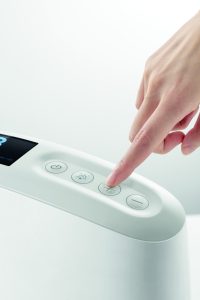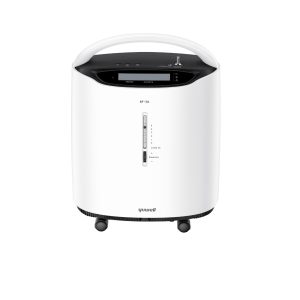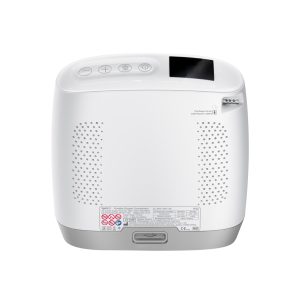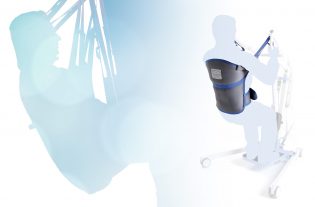It is estimated that a healthy person, at rest, inhales about 6 liters of air per minute, which increases to 26 liters while walking. This is an important figure that helps us understand the intense activity of our respiratory system. Breathing in and out correctly ensures optimal oxygenation for our body, meaning that our organism can absorb and use oxygen as efficiently as possible.
In all cases where, due to acute conditions or chronic diseases, there is a decrease in blood oxygen levels, a doctor may prescribe oxygen therapy through the use of oxygen concentrators. Let’s explore in detail the characteristics of these devices, the main types and the aspects to consider when selecting and using them.
What are oxygen concentrators?
Oxygen concentrators are devices that can extract the oxygen contained in the air and direct it into a reservoir for patient administration. They operate on the principle of “rapid pressure swing absorption of nitrogen” through a molecular filter. The nitrogen is filtered and removed, allowing the separation of oxygen from the air, which is then delivered as a high-concentration O2 mixture to the patient through a nasal cannula or oxygen therapy mask.
These concentrators are painless, safe and equipped with an electronic interface that allows the user to easily adjust the oxygen concentration levels and flow settings based on medical instructions.
What are the main types of oxygen concentrators available on the market?
Oxygen concentrators can be fixed, transportable or portable. Fixed models are powered by electricity and provide a continuous flow. They are usually equipped with wheels for easy movement between different rooms (effectively making them transportable). Portable concentrators are characterized by their compactness and ease of use both inside and outside the home. For example, the oxygen concentrator distributed by Moretti comes with a carrying bag for easy transport, operates on long-lasting batteries and can be conveniently recharged in any situation.
These devices are generally recommended for “moderate to low” respiratory needs and are not considered life-saving devices. The concentrator generates a high-concentration oxygen flow suitable for relieving mild or non-permanent respiratory insufficiency.
 Why are they used?
Why are they used?
The use of oxygen concentrators always follows a specific medical prescription, whether for conditions that require short-term home oxygen therapy or chronic illnesses that require long-term use of concentrators.
In the first case, it includes conditions that temporarily impair the ability to exchange oxygen with the blood, either at the level of the pulmonary alveoli or the bronchi (pneumonia, asthma, respiratory distress syndrome or bronchopulmonary dysplasia).
In the second case, it involves long-lasting or progressively worsening respiratory conditions. These include sleep-related respiratory disorders, certain types of headaches, severe heart failure, cystic fibrosis and chronic obstructive pulmonary disease (COPD).
For more information on oxygen concentrators, visit our website: click here.












